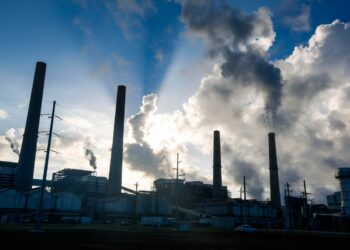Sometimes facts and rationality win. Early this morning, California legislators passed a bill that will keep California’s last operating nuclear power plant, the Diablo Canyon Power Plant, open and operating until 2030. The 2,250-megawatt plant, which generated more than 16 terawatt-hours of electricity last year, or nearly 9% of the state’s electricity needs, had been slated to close in 2025.
The passage of the bill is a huge, and much-needed, win for consumers, nuclear advocates, and the climate. It’s also a long-overdue rebuke to the anti-nuclear groups who had pushed for the premature shuttering of the plant.
The bill, which must be signed into law by Gov. Gavin Newsom, includes a $1.4 billion forgivable loan to Diablo Canyon’s owner, Pacific Gas & Electric. The passage of the bill marks a turning point for nuclear power in the U.S. Over the past 18 months or so, two nuclear power plants – Palisades in Michigan and Indian Point in New York — have been prematurely shuttered. When domestic nuclear plants have been closed, the electricity they produce has been replaced by natural gas-fired generators, which results in both higher costs and increased emissions.
That’s exactly what happened in New York after Indian Point closed. In 2021, the average wholesale price of electricity in New York was $47.59 per megawatt-hour. That’s nearly two times what it cost in 2020. Why did rates increase? The answer is obvious: the state’s grid became more reliant on natural gas, which has been soaring in price. According to an independent market monitor who works for the New York Independent System Operator, the agency that manages the state’s electric grid, electricity prices “generally increased as a result of the retirement of Indian Point.” Emissions also jumped. Power-sector emissions in New York totaled 28.5 million tons in 2021, an increase of 4.5 million tons compared to 2019, prior to the plant’s premature closure.
The move to save Diablo Canyon is a huge win for energy realism. The vote happened at about the same time the state — which has been plagued by blackouts and soaring electricity prices — is in the midst of yet another power crisis. On Wednesday, the California Independent System Operator issued a “flex alert” calling for “voluntary electricity conservation.” CAISO also asked consumers not to charge their electric vehicles during times of peak demand.
The day before the vote, Elliot Mainzer, the president and CEO of CAISO, sent a letter to Newsomwhich said Diablo Canyon should be kept open because it provides “significant support for the grid during evening hours when solar is no longer operating…We should ensure new sources of clean electricity supply are in place before retiring non-emitting generation that plays such an instrumental role supporting reliable electric service.”
The passage of Senate Bill 846 also delivers a well-deserved spanking to the NGOs — including Union of Concerned Scientists, Friends of the Earth, and Natural Resources Defense Council — who pushed for the closure of Diablo Canyon. For years, those groups and others participated in what can only be called a disinformation campaign that relied on fear and bad data to justify the shuttering of Diablo Canyon. Regrettably, that fear-mongering continues. After the bill passed, National Public Radio cited Juliet Christian-Smith, a regional director at the Union of Concerned Scientists, who claimed that an earthquake-induced accident at Diablo Canyon could “cause more than $100 billion in damages and 10,000 cancer deaths.” NPR then quoted her as saying the bill “ignores the plant’s environmental impacts and vulnerability to earthquakes,” and that “safety cannot take a back seat in our quest to keep the lights on and reduce global warming emissions.”
Finally, the passage of the bill is a major victory for the many groups and pro-nuclear advocates who fought for years to keep Diablo Canyon open. A partial list of the people and groups who deserve congratulations includes author and former California gubernatorial candidate Michael Shellenberger and his colleagues at Environmental Progress, Carl Wurtz and his colleagues at Californians for Green Nuclear Power, and Heather Hoff and the other mothers at Mothers for Nuclear. In addition, congratulations to Ted Nordhaus, Jonah Messinger, Adam Stein, and the other folks at the Breakthrough Institute, who fought to prevent the closure and released a blistering critique of the report done by Friends of the Earth in 2016 that was used to justify the closure of Diablo Canyon.
Before finishing, a reminder: the bill only extends the life of Diablo Canyon until 2030. That’s not long enough. If California is serious about reducing its emissions and keeping the lights on, it needs to keep Diablo Canyon open for many more decades. It must also build new nuclear plants. And it needs to get started right now. But for today, it’s time to celebrate.











